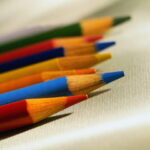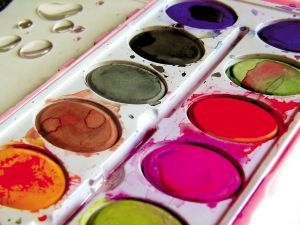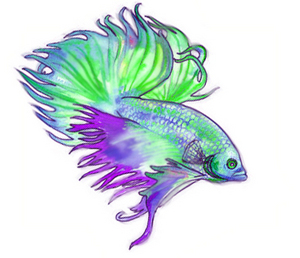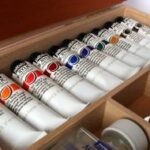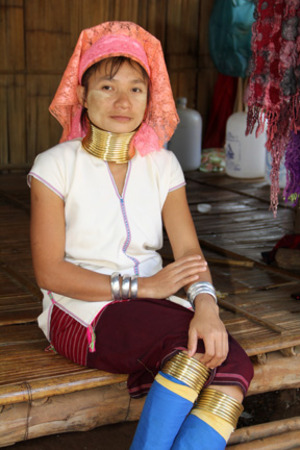Drawing and sketching for realism is much more involved then picking up a yellow number 2 pencil, the same as those that were required throughout your elementary and high school career. There are several types of pencils, from graphite, to charcoal to colored and watercolor. All have different uses and provide different shades and tones as well as texture.
So you think you’re ready to start drawing, so let’s make sure you have all the tools you need, or at least the essentials. I am going to assume you already know the proper techniques for drawing, but perhaps are just lost when you look at the array of pencils when you visit the arts and crafts store, so here I will help you in choosing the tools you need.
Graphite
Graphite is the simplest form of pencil. This is what your old standard number 2 pencil fits into. However, there are many types of graphite pencils. Graphite ranges from 2B, HB, 4B, 6B, 2H, H, 4H, and 6H and so on. As with anything, quality is a factor. Obviously the more you spend on a pencil or set, the more likely the quality is better and therefore your tones better and pencil will be less likely to scratch.
As for the ranges, and what the numbers mean, 2H is going to give you a much sharper line but lightest tone then 6B. The range starts at the hardest “lead” (graphite pencils contain no lead) of 9H and continues counting down to 2H, then mediums begin, H, F, HB and continue through the softer “leads”; 2B on through 9B which is the softest.
A number 2 pencil, often used in school classrooms, is an HB pencil. This would be considered of medium tone and hardness. If you’re a beginner probably the only ones that you will regularly use are 2H, HB, 2B, 4B, and 6B. Start with those and add to them if you feel you need more tonal range. You can buy box sets of graphite’s as well.
Some artists also prefer to use mechanical pencils for their beginning sketch lines. This will be personal preference. Mechanical pencil “lead” tends to break easy, but it does give very light lines. You can do just as well with a 2H pencil.
For most artists you will choose a pencil that is encased in wood; however, there are other varieties of graphite pencils. These include, graphite sticks, crayons, and lead which are not housed in wood casings. Graphite sticks can be messy to work with (are not covered in wood) and can be used for large areas. Woodless pencils (lead not covered in wood) can give you more for your money by way of having an entire pencil of graphite without the wasted wood as well as give you use of the whole pencil in a single stroke; these will be more expensive however. Graphite crayons are much thicker leads and tend to be used for layouts. You can also use an ebony layout pencil which is a dark black graphite pencil.
Charcoal
As the name states, charcoal pencils are made of just that. They tend to be much messier then graphite. The “lead” is very soft and will give you much darker lines then that of graphite. It can take practice to learn how to use this type of pencil. Of course there are varieties of this type as well.
Full fledged charcoal pencils will be encased in wood like traditional graphite’s, however they are normally labeled only from soft, medium to hard, sometimes they do come in 2H, 2B, 4B, and 6B. Closely related to charcoal pencils and often contained in the same set, is a carbon pencil. Carbon pencils can be an asset to you. They are generally a mix of graphite and charcoal and will have darker lines then graphite, but will be smoother than that of plain charcoal.
Charcoal also comes in willow form, which is not housed in wood, and tends to break easy and be very messy, may crumble and will smudge easily. It will take practice to use willows. Compressed charcoal is similar looking to graphite sticks. Compressed charcoal is charcoal that has been bound with gum binder and the amount of binder determines the hardness. Basically compressed charcoal sticks are the woodless version of charcoal pencils. They can be sharpened and shaped to fit your needs. They are easier to handle then willows.
Colored
Colored pencils are typically pigmented wax. This makes them similar to a crayon. Like any other pencil there will be quality differences with the higher end (and more pricey) pencils containing more pigment and less wax for brighter colors. Traditional colored pencil leads tend to be on the harder side ,but many artists have mastered the technique of blending these pencils in the same manner as graphite and charcoal.
There are also oil based colored pencils, erasable colored pencils (non-wax based) and watercolor colored pencils. Erasable colored pencils are easily erased from paper as opposed to wax based pencils. Oil based colored pencils don’t seem to be very common but are easy to use when drawing on wood. Watercolor colored pencils can be fun to use as they give you the look of watercolor and pencil together, and the pencil lead itself seems to be on the softer side as opposed to traditional colored pencils which makes blending easier.
Get out there and create a masterpiece either in smooth gray graphite, rich black charcoal, or stunning realistic colors. Be sure to pick up the other tools that are essential for all pencil artists, such as a good gum eraser, kneaded eraser, white rubber eraser (one in pen form is my choice), and of course a pencil sharpener (any will do). Added tools will be a soft cloth for cleaning or smudging, tortillons, and stumps, and possibly a sandpaper pad. Most importantly, paper. Use the correct kind of paper for the medium that you choose.
Places to buy your supplies: http://www.jerrysartarama.com/ : http://www.dickblick.com/ : http://www.cheapjoes.com/
